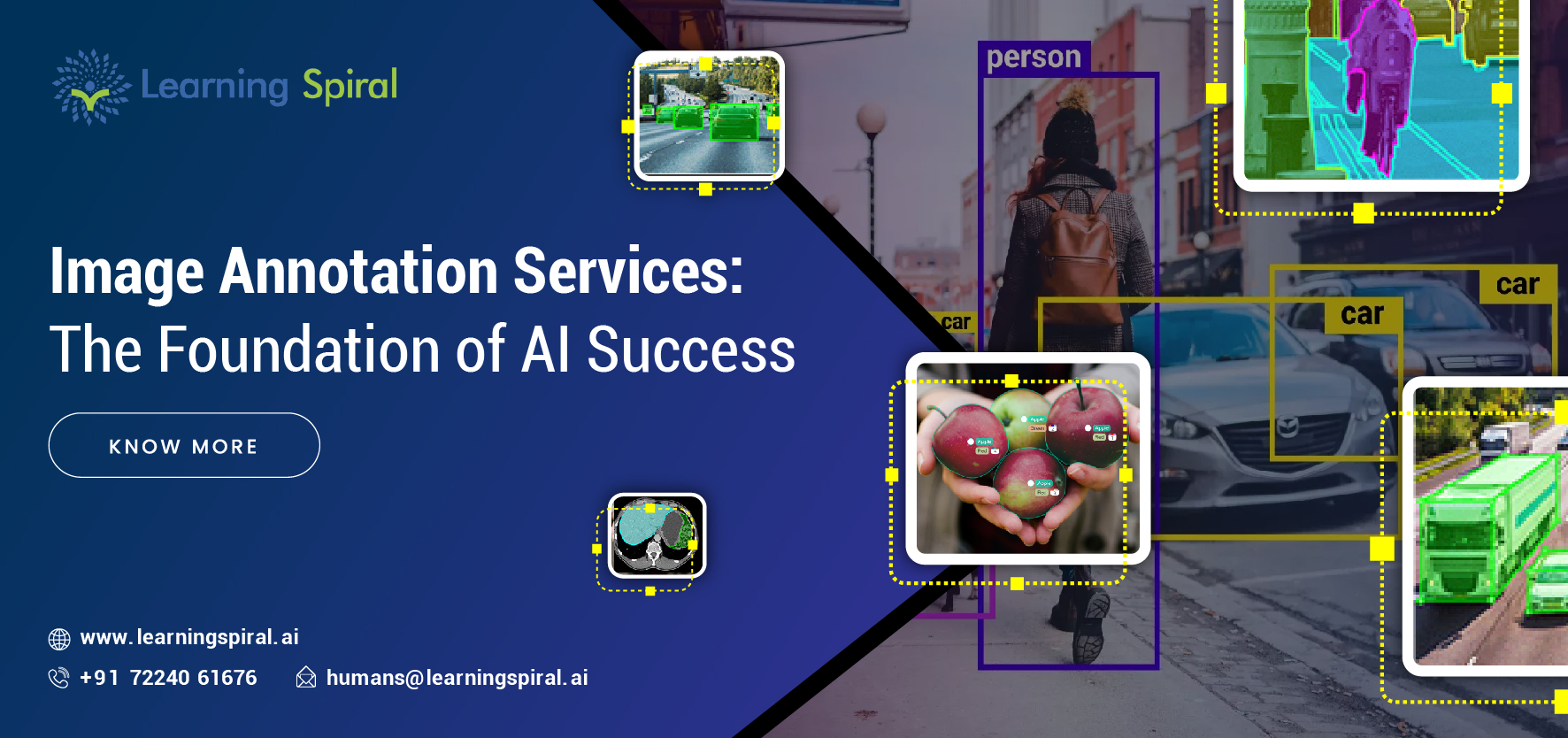
Image annotation, a critical process in the realm of artificial intelligence (AI), involves labeling specific elements within images. This meticulous task provides AI models with the necessary training data to recognize, understand, and interpret visual information accurately. Image annotation services play a pivotal role in enabling AI applications across various industries, from self-driving cars to medical diagnostics.
The Importance of Image Annotation 
To fully understand the wonders of image annotation, the below pointers needs to be taken into consideration:
- Training AI Models:
High-quality image annotation is essential for training AI models to perform tasks such as object detection, image classification, and semantic segmentation.
- Accuracy and Precision:
Accurate annotations ensure that AI models learn from reliable data, leading to more accurate and precise results.
- Data Diversity:
A diverse dataset with well-annotated images helps AI models generalize better and handle real-world scenarios effectively.
- Customization:
Image annotation services can be tailored to specific industry needs, providing customized datasets for specialized AI applications.
Types of Image Annotation
Image annotation is very vast with multiple kinds of usages and types:
- Bounding Box Annotation: A rectangular box is drawn around the object of interest to define its location and size.
- Polygon Annotation: A polygon shape is drawn to outline the exact boundaries of an object.
- Semantic Segmentation: Every pixel in the image is assigned a label, indicating the object or class it belongs to.
- Instance Segmentation: Similar to semantic segmentation, but each instance of the same object is individually labeled.
- Landmark Annotation: Specific points within an image are marked to indicate key features or landmarks.
Applications of Image Annotation
- Self-Driving Cars: Image annotation is crucial for training AI models to recognize objects like pedestrians, traffic signs, and other vehicles.
- Medical Imaging: Annotating medical images helps AI systems diagnose diseases, detect abnormalities, and assist in surgical procedures.
- Retail: Image annotation enables AI-powered visual search, product recommendations, and inventory management.
- Security and Surveillance: Annotating images from surveillance cameras helps identify objects, people, and suspicious activities.
- Augmented Reality (AR) and Virtual Reality (VR): Image annotation provides the data needed to create realistic and immersive AR/VR experiences.
Choosing the Right Image Annotation Service
When selecting an image annotation service, consider the following factors:
- Quality: Ensure the service provides high-quality annotations with accuracy and consistency.
- Expertise: Look for a service with experience in your specific industry or application.
- Scalability: The service should be able to handle large volumes of data and scale as your needs grow.
- Privacy and Security: Data privacy and security are paramount, especially when dealing with sensitive information.
- Cost: Compare pricing models and choose a service that fits your budget.
The Future of Image Annotation
As AI continues to advance, the demand for high-quality image annotation services will only increase. Automation and machine learning techniques are being explored to improve efficiency and reduce costs. Additionally, advancements in data privacy and security will ensure that image annotation remains a valuable tool for AI development.
Conclusion
Image annotation is the cornerstone of AI applications that rely on visual information. By providing accurate and diverse training data, image annotation services empower AI models to perform complex tasks and drive innovation across various industries.
As AI technology evolves, the importance of image annotation will only grow, making it a crucial component of the AI ecosystem.

